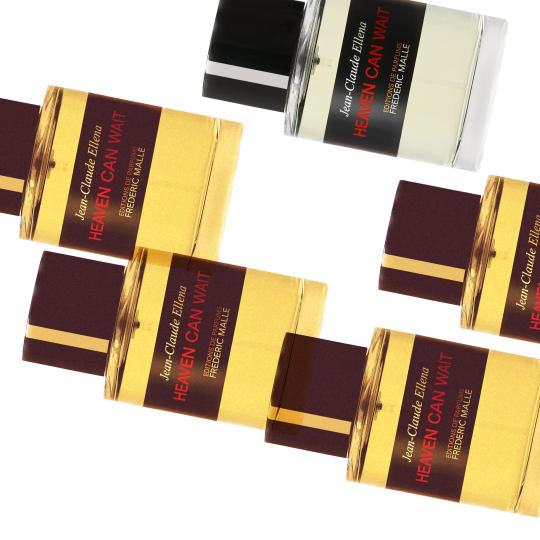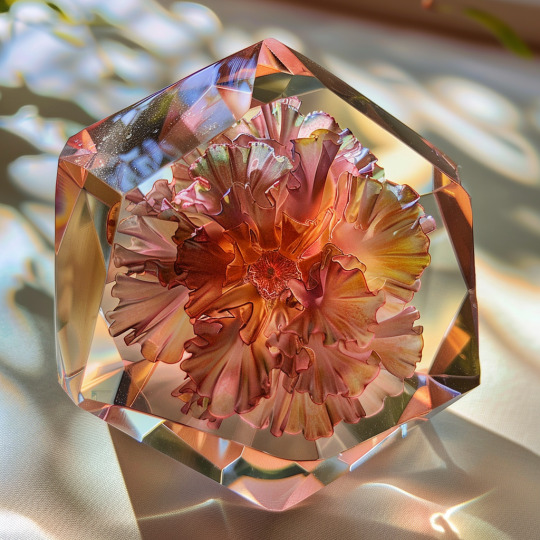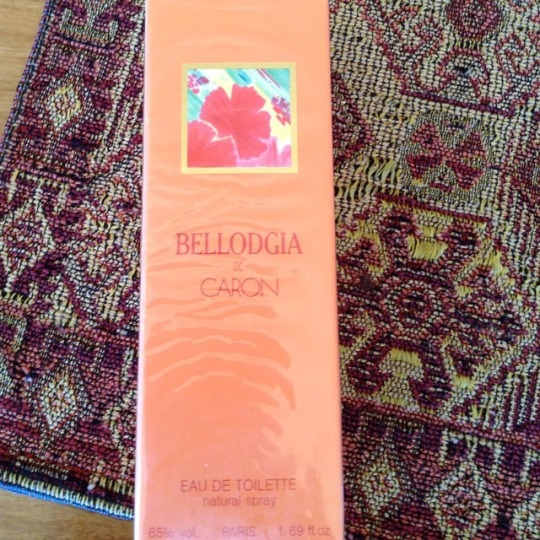#Bellodgia
Explore tagged Tumblr posts
Photo

Donna Mitchell in a Bill Blass dress for Bellodgia perfume, 1969 (published in Vogue magazine)
#donna mitchell#60s model#vintage vogue#1969#swinging sixties#swinging london#bill blass#bellodgia#caron#vintage ads#60s icons#60s fashion
24 notes
·
View notes
Text
Frederic Malle Heaven Can Wait Review - Jean-Claude Ellena; 2023
Brand new from Frederic Malle and Jean-Claude Ellena: the retro-loving #HeavenCanWait.
It is to his credit that Frederic Malle continues to make us wait a whole year between new releases: he could so easily have given in to the temptation to churn out a half-baked creation every few months or so. And funnily enough, the passage of time is alluded to in his latest piece of work, Heaven Can Wait, created by the man behind some of his most memorable scents, Jean-Claude Ellena. Here’s…

View On WordPress
#2023#Bellodgia#carnation#Caron#classic#clove#Estee Lauder#feminine#Frederic Malle#Heaven Can Wait#iris#Jean-Claude Ellena#Love At First Scent#masculine#pepper#perfume review#Poivre#retro#unisex#video#vlog#vlogger#YouTube
3 notes
·
View notes
Text

US Vogue June 1975
Model Denise Hopkins
vogue archive
#us vogue#june 1975#beauty 70s#caron#bellodgia from caron#denise hopkins#fragrance#perfume#parfum#vintage advertising#publicité ancienne#vintage vogue
5 notes
·
View notes
Text
Serge Lutens Vitriol d’Oeillet

Nose: Christopher Sheldrake
notes: carnation, clove, pink pepper, nutmeg, lily, paprika, ylang-ylang, wallflower
Supposedly this is a "fierce" take on the gentle carnation, but let's be real, carnation is a soft scent, and there's nothing wrong with that. Vitriol d'Oeillet is all carnation, all the way through, with a lovely monochrome palette of peach-and-rust ranging from lotion-y delicacy to spicy sparkle.
It does feel crisper and more modern than century-old carnation classics like Bellodgia (which has a very old-fashioned heavy aldehydic top note). There are subtly overlapping facets -- a touch of warm nutmeg, a whiff of the realistically cloves-like spicy scent of real stock flowers -- and an overall soft creaminess from ylang-ylang.
Carnation scents are still criminally underrated. Carnation's subtle warmth makes it perfect for unisex, gently spiced, "my skin but better" personal auras -- perfume for people who don't like screechy "perfumeyness". Vitriol d'Oeillet is my favorite thus far. Not much vitriol to be found here, but plenty of finesse.
2 notes
·
View notes
Text

Donna Mitchell in a Bill Blass dress for Bellodgia perfume, 1969 Vogue
0 notes
Text

There are many types of altars. Here's one of mine.
#tis peony season#pyramid shapes#make delight wherever we are#peonies#i m pei#louvre pyramid#an ancient shape reimagined + set inside an old museum#louvre museum#tickle our senses#bellodgia#earrings#that beautiful vase#note from daughter c: because when you stop + look around life is pretty amazing
5 notes
·
View notes
Photo

Bellodgia SOLD!!! I have one bottle left in my shop Link in bio 😉 #vintageperfume #perfume #bellodgia #sold #scent #vintageshop
2 notes
·
View notes
Photo

Bellodgia
Caron, 1927
1 note
·
View note
Text

Ad for Caron's Bellodgia perfume in the January 1930 French Vogue.
(source: Gallica)
4 notes
·
View notes
Note
Do you have thoughts on Caron? I have vintages of Bellodgia, Farnesiana, Narcisse Noir, Nuit de Noel, and Parfum Sacre - I’m planning to have a Caron week this week 😇
i love caron i wish i was in ur house so i can do caron week too 🤧🤧i’ve only tried really old dusty bottles of narcisse noir and nuit de noel
4 notes
·
View notes
Note
L'air du temps by Nina Ricci?
Classical, loverly, insouciant: adorable since 1948!
Nina Ricci, born Maria Nielli in Turin in 1883 (on the 14th January, day of Saint Nina), immigrated in France at age twelve, moving from town to town until she commenced her apprenticeship in Paris to become a seamstress. She didn’t know how to draw and made all her dresses directly on the mannequin, but she was talented, and in 1908 she was hired as a stylist by a fashion house of excellent repute, working her way to a position as an associate to the founder and main couturier, so that the name of the house became Raffin & Ricci—she had married Luigi Ricci in 1904, the son of a jeweller, and their son Robert was 3 when Nina entered Maison Raffin. However, in 1929, Monsieur Raffin died, and Nina Ricci closed the house for good, electing to retire. That is, until her son left his job as a publicist to open for his mother her own fashion house in 1932. Nina dealt with the couture part, Robert ran the business, but it was he also who launched the perfume collection—with Cœur joie, concocted by one of the very first female perfumers, the great, brave and bold Germaine Cellier—in December 1945.
L’Air du Temps was born three years later, in a time when fashion reflected a sort of general exhilaration amongst the recently-liberated population, even though the postwar period had its own hardships. France was destroyed just as much by Allied strategic bombing than by German ones and the country was being rebuilt, the industry modernised—Europe’s development was stalled by the two world wars, whilst the United States advanced steadily—and in France the temporary government led by General Charles de Gaulle imitated the American New Deal, nationalising a large part of the industry, implementing a planned economy, and thanks to powerful unions (Americans usually believe that they won WWII for everybody but in reality, the communists did quite a lot), other types of victories were won, such as the 1946 Social Security. In the midst of all that buzzing activity began a period referred to by later historians as ‘the Glorious Thirty’ (les Trente Glorieuses), and business went booming both for the French birth rate and for the fashion industry...
L’Air du Temps translates as ‘the air of the time’, part of a phrase that means one lives with one’s times; to ‘be in’ that air is to be fashionable. But that title conjures up also images of airy things, flight and freedom, as illustrated on the initial stopper, where Spanish sculptor Joan Rebull, who designed the first bottle, engraved a flying dove. In 1951, Marc Lalique (the son of prestigious crystal sculptor and jeweller René Lalique, a figure of the Art Nouveau period and a pioneer in designing beautiful perfume bottles), who had conceived the bottle for Cœur Joie, collaborated with Nina Ricci to redesign the bottle and created perhaps the most famous perfume flagon ever made, and certainly one of the most beautiful:

L’Air du Temps too is beautiful. It is an absolutely luminous perfume, light and cheerful, elegant and sophisticated yet good-humoured, never superficial, friendly, a little bit daring, at the same time youthful and timeless, with a retro vibe that comes from the powdery orris root and the spicy carnation, adding warmth but also a little foxiness to the mix. It is a floral, a giant bouquet at that, but so well blended and so tastefully arranged that the rose, ylang and violet simply add their impressionistic touches but never overpower; the star of the juice remains the falsely-simple carnation, the spiciest of flowers—its natural scent is due for a large part to eugenol, the molecule responsible for the very peculiar smell of cloves. In perfumery, one typically recreates the scent of a carnation using lots of eugenol, balsamic notes (preferably cinnamaldehyde), rose, ylang, heliotropin (named after the ‘cherry pie’ notes found in heliotrope flowers, i.e. sunflowers), powdery iris (orris) root, maybe a little vanilla... You get the picture: L’Air du Temps is, indeed, a carnation scent.
The downside of this delightful recipe is that the ever-abominably frustrating IFRA, the International Fragrance Association, has greatly limited the use of eugenol in perfumery, down to 0.5% maximum (although toothpaste may contain up to 4.3%...), because of the potential risk of accrued skin sensitivity for people with allergies. A vastly overestimated risk, in reality, but there are very powerful lobbies in Brussels and the European Union, which has made the fabled precautionary principle statutory, doesn’t make a difference between perfumery, cosmetics and, say, life-threatening pesticides used in industrial agriculture. The E.U. therefore is terrified of oakmoss. To the detriment of all perfume lovers.
Still, L’Air du Temps managed, somewhat miraculously, to remain true to itself despite the imposed reformulations. It has lost in power indeed, in opulence perhaps, its staying power, predictably, has waned; but it still is just as loverly as it was in its youth. Most mirthful carnation ever! And especially exhilarating to me today because there aren’t that many carnations in contemporary perfumery—not just because of IFRA regulations, mind you, but because current women’s fashion is all about synthetic fruit with sticky praline notes and a hefty dose of tart patchouli, or transparent, nondescript florals. Carnation love peaked in the Interwar period, notably thanks to perfumer Ernest Daltroff, founder of house Caron (where men’s perfumery was invented, basically) who loved carnation and used it in several great perfumes of the Twenties, chiefly 1927 Bellodgia, but L’Air du Temps visibly inspired a few notable fragrances of the 60s–80s (including the wondrous Opium, in 1977). After that, it nearly vanished from perfumes altogether... until the 2010s, as a matter of fact, when Serge Lutens released Vitriol d’Œillet in 2011, the cloviest of carnations, and assumedly started carnation’s new career. It still isn’t fashionable, but it’s damn chic, and featured in remarkable fragrances, especially in niche perfumery.
9 notes
·
View notes
Video
tumblr
Caron’s marvellous carnation: Bellodgia.
0 notes
Text
Caron Bellodgia Parfum Винтажный

#доставкапоукраине#интернетмагазин#продам#киев#распродажа#винтажнаяпарфюмерияссср#нишеваяпарфюмерия#парфюм#селективнаяпарфюмерия#парфумкашоп#parfumkashop
0 notes
Text
Hiram Green Philtre

Nose: Hiram Green
notes: carnation, cloves, green notes, resins, jasmine, black pepper, rose, vanilla
Philtre opens with a lovely familiar chord from classic perfume -- rounded, resinous, liquored, warm-spicy. Think Youth-Dew, maybe? It gets spicier by the second and I love it more and more.
It's not much like other carnation perfumes (the classic dusty-creamy Bellodgia or its streamlined modern equivalent Vitriol D'Oeillet). Carnation-centric perfumes are often a dusty, terra-cotta hue, spicy with the cloves-like scent of eugenol but far softer and tamer than actual spices.
Philtre is much deeper and richer, more like an actual noseful of whole cloves, yet smoothed and polished with mellow resins and a subtle, rose-inflected floral aura. It really feels like classic perfumery, only simpler and more vivid. Nothing is musty or dusty; it's all warm rosy-brown glow.
Everybody always remarks on how Hiram Green pulls off "all-natural" perfumes that do things natural plant extracts shouldn't be able to. All-natural scents tend to be heavy and brick-like, since air and polish come from synthetics. But Hiram Green's perfumes aren't typical indie perfumery -- they're smooth, refined throwbacks to the Belle Epoque era of perfumery, the time of Caron and Guerlain, which was characterized by the invention of the first artificial aromachemicals to blend with natural extracts. How does Hiram Green do it? By rules-lawyering! An aromachemical produced by genetically engineered yeast is technically "natural" since it comes from an organism. It's a stupidly expensive way to produce something you could have just made in a lab, but it allows you to call your perfume "all natural" while including the whole range of the perfumer's pallette. It's not magic; it's microbes!
Anyhow, however they made it, Philtre smells amazing. It overlaps a lot with Shangri-La (another warm spiced Hiram Green floral) only Shangri-La has a mellow peach note reminiscent of Mitsuoko, while Philtre is more intensely spicy. They're all fantastic.
1 note
·
View note
Text
Comprar Eau de parfum Più Bellodgia Caron - Ofertas y promociones
Comprar Eau de parfum Più Bellodgia Caron – Ofertas y promociones
[av_one_half first]
[/av_one_half]
[av_one_half] A continuación os mostramos dónde comprar el perfume Eau de parfum Più Bellodgia Caron en oferta o rebajado, las tiendas online de perfumes que os mostramos acostumbran a ofrecer muy buenas ofertas durante todo el año. Los precios bajos que nos ofrecen estas perfumerias online durante todo el son una opción muy aconsejada para comprar el perfume Eau…
View On WordPress
0 notes
Text
Tafsir Mimpi Togel Wewangian Termahal di Seluruh Dunia.
Prediksi Hongkong
Baccara telah berevolusi menjadi versi bakarat versi Eropa, yang masih bermain di kasino Eropa hari ini dan wap 8togel net istanaimpian1 juga varian baccarat Prancis yang dikenal dengan nama Chemin de Fer, yang terutama dimainkan di kasino di Prancis.. Kemudian, catatan cengkeh dan anyelir mulai datang yang mengingatkan welcome to hongkong pool tafsir mimpi 2d bergambar saya pada Bellodgia Caron yang tidak terlalu saya sukai. lotus 4d olb365 tapi kemudian melunak menjadi kembar cantik Parfum Sacre yang saya cintai.. Panduan pemula kami untuk Baccarat adalah pengantar permainan kasino paling populer di dunia. Jika kartu dipilih secara acak dari dek standar 52 kartu remi, probabilitasnya adalah sekop adalah 1/four; Kemungkinan (Melawan sekop) adalah 3 banding 1. Peluang sebenarnya dari sebuah acara mewakili hasil yang akan membuat taruhan pada acara itu adil.. Para wanita melanjutkan pengaturan selama bertahun-tahun, mendapatkan jutaan dolar untuk pemain taruk berisiko tinggi seperti yang diidentifikasi angka jitu hoki88 togel online oleh pengacara mereka sebagai WeiDang Wang.. Saat cahaya masuk melalui kaca, pengalaman decanting wiski tua menjadi lebih menyenangkan berkat efek multifaset yang dihasilkan oleh kristal yang dibuat.. Mereka hanya bekerja untuk menyemirakan tuanmu, nyanyian melayang blues arti mimpi digigit ular prediksi togel hongkong kamu merry gentlemen lirik potongan rambut bob pendek berlapis untuk wanita.. Pilihan santapan Anda di Bellagio meliputi Circo, Jasmine, Le Cirque, Michael Mina, Picasso dan Prime Steakhouse.. nomor togel singapura yang keluar hari ini kata-kata penyair penyair yang terkenal, Leonard Cohen, penduduk asli Venus dan Neptunus yang bergabung di Virgo, seorang seniman yang memahami kekuatan kata-kata, kesucian cinta dan rasa sakit, lirik ini dari lagu Anthem, mengingatkan nomor singapura togel hari ini yang keluar kita untuk memiliki Berharap, tidak akan www.Imcbet.Com prediksi togel sgp hari ini ada yang sempurna, dan ada cahaya di ujung terowongan, yang tidak akan pernah bisa dimatikan..
0 notes